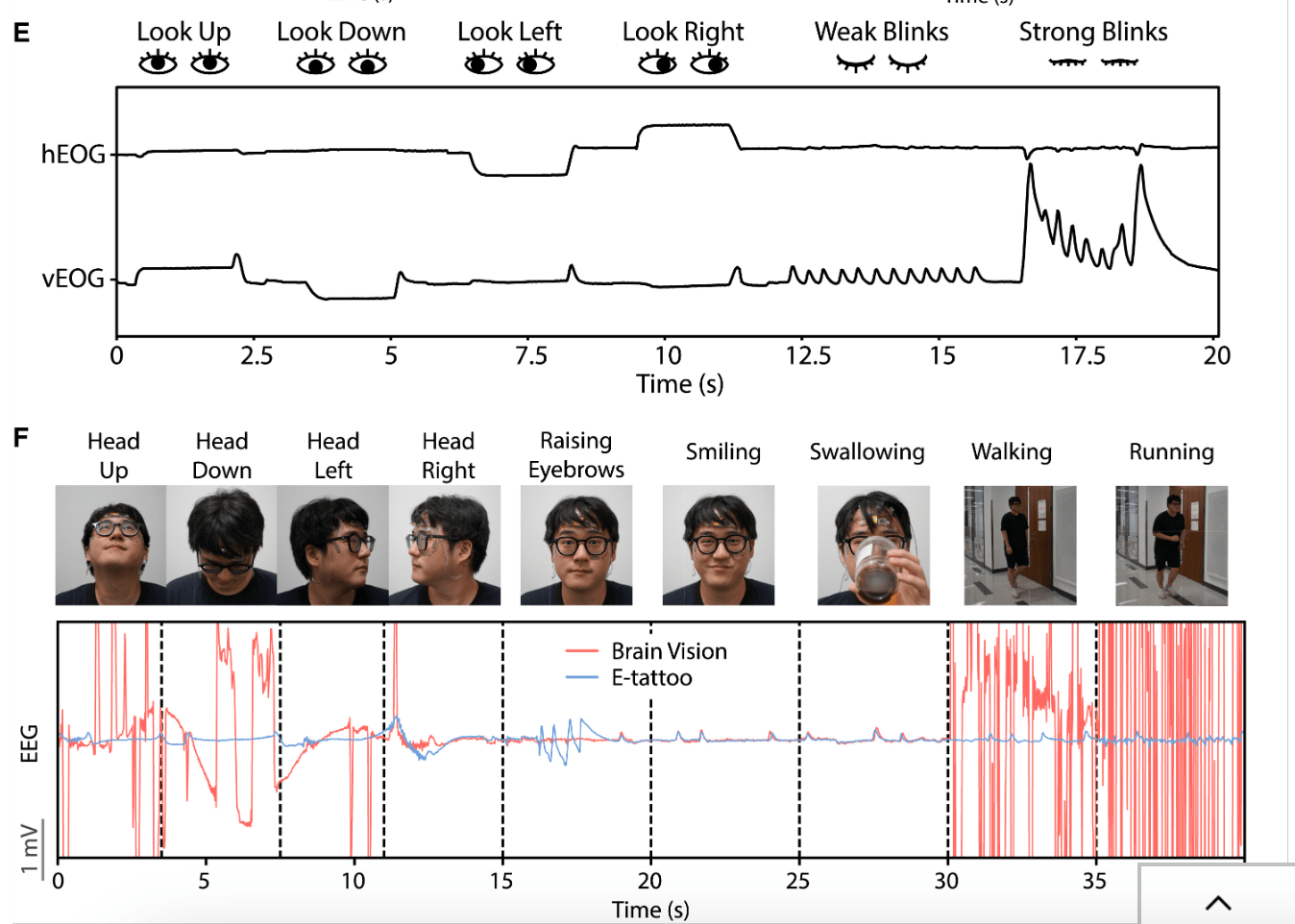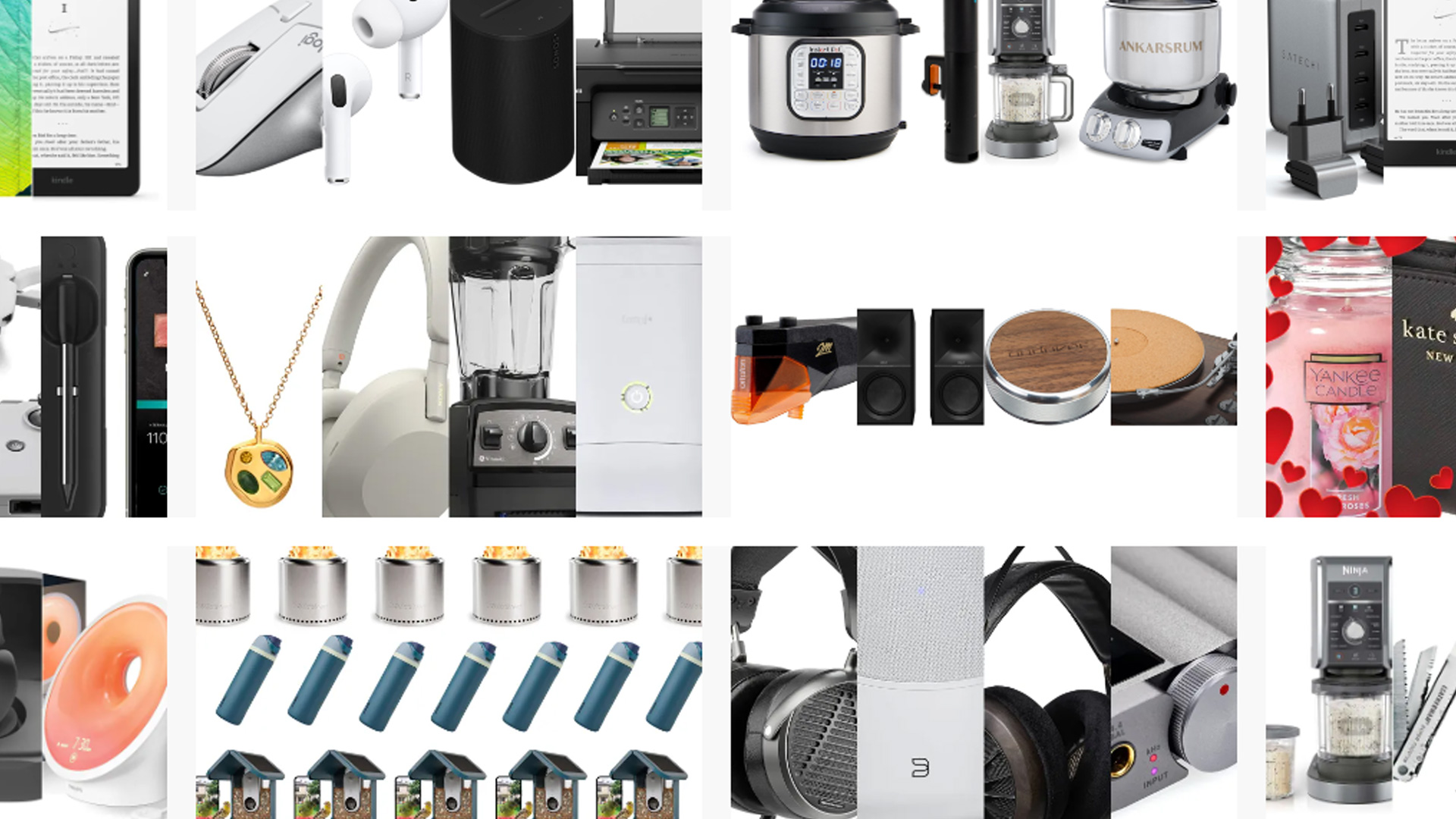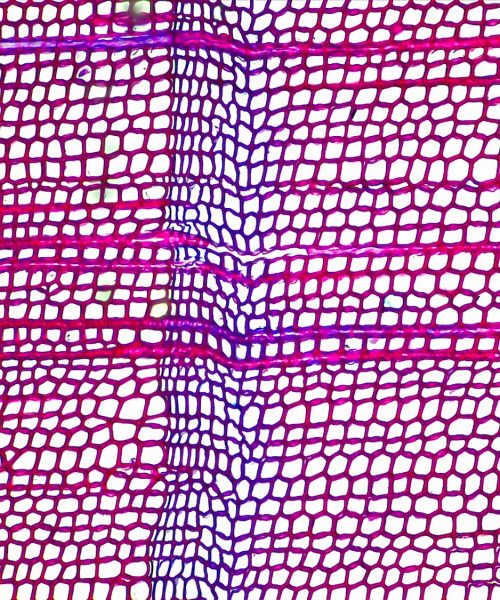Face tattoos, typically reserved for rappers and rockers, could one day be used to make sure everyday office workers aren’t overexerting themselves.
This week, researchers from the University of Texas unveiled a new, removable, sticker-like electronic face wearable that uses electroencephalography (EEG) and electrooculography (EOG) to constantly monitor changes in the wearer’s mental strain as they complete tasks. In theory, the e-tattoo could ensure air traffic controllers or other workers in similarly high-stress environments stay in the “Goldilocks zone” of mental exertion: not so much that it causes errors, but not so little that it leads to boredom and distraction. And unlike regular face tats, these can come off at the end of the day.
“We’ve long monitored workers’ physical health, tracking injuries and muscle strain,” University of Texas Austin professor and study lead author Luis Sentis said in a statement. “Now we have the ability to monitor mental strain, which hasn’t been tracked.”
The new wearable was revealed this week in the journal Device.
Using tech to achieve an “optimal mental workload”
Researchers use the term “mental workload” to refer to the overall amount of cognitive effort a person exerts to complete tasks. Though specifics can vary depending on the type of work, past studies have shown that for high-stress activities, people perform best when they are neither overloaded nor underloaded. Measuring that balance can be tricky. The current standard for assessing mental load is a survey called the NASA Task Load Index, which asks workers to rate their perceived level of exertion after completing specific tasks. The problem with this approach is that it’s inherently subjective and doesn’t capture real-time physiological responses.

Image F: Brain Vision (red) and e-tattoo (light blue) measured EEG under various head movements, facial expressions, and ambulatory movements.
For years, researchers have tried to overcome the subjectivity of self-reported mental workloads by using EEG and EOG to measure changes in a person’s brain activity. But those systems, typically in the form of helmets or electrodes attached to the scalp, also aren’t ideal for everyday use because of their bulky size that makes it unrealistic for workers to wear throughout the day.
Enter electronic tattoos. The researchers designed paper-thin, sticker-like sensors that attach to a user’s forehead and wirelessly measure brain waves while they work. Each sensor contains wavy lipids and coils that allow it to stretch and bend, helping it adhere to the skin while still maintaining a strong signal. A small, lightweight battery pack keeps the system powered. Each tattoo is also custom-fitted to account for slight variations in individual faces. The stickers themselves are disposable and inexpensive to produce.
Images of the wearable provided by researchers show a bearded man with the sticker slapped across his forehead. At first glance, the top section of the tattoo resembles a row of black flowers or mandalas spread out across his head, connected by wavy black lines. These lines extend down the subject’s face from each temple. Another flower-like cluster of sensors appears at the top of his right cheekbone. Below each eye, a separate set of sensors sits about two inches beneath the lower eyelid. If the lighting were slightly different, the man would look like he was pulled directly out of concept art for the video game Cyberpunk 2077.

Those markings aren’t just for aesthetics. Together, the sensors placed around the face are capable of measuring changes in theta and delta brain waves—both of which are associated with increased cognitive demand. By contrast, decreases in alpha and beta brain waves signal mental fatigue. The researchers had six test subjects wear the e-tattoos while completing a series of increasingly complex tasks. They then compared those results to responses on the NASA Task Load Index and found that the objective measurements from the tattoos were comparable. Taking it a step further, they trained a computer model to estimate a subject’s potential mental workload based on brain signals collected by the device at the start of the task. The e-tattoos, the researchers note, were able to “predict mental strain.”
Electronic tattoos aren’t just for the face
This isn’t the first time researchers have used electronic tattoos to measure brain activity. Last year, the same team created a liquid electronic tattoo ink that could be sprayed onto a person’s scalp. Like the newer “face tattoo,” this liquid ink allowed EEG sensors to monitor brainwaves. Back in 2018, researchers from the University of Minnesota developed a 3D-printable tattoo ink made from silver flakes, designed to help heal wounds and be peeled off and discarded when no longer needed. Other researchers have also developed lightweight, sweat-resistant tattoos that can be placed on the chest to continuously monitor heart rate. In theory, future versions of these wearables could be used to detect early signs—or “red flags”—of heart disease.
All of this is still in the early stages, but the researchers behind the electronic face tattoo envision a not-too-distant future where workers in high-stress professions could wear one of these sensors during their shifts and discard it at the end of the day. The device would collect brainwave data during the workday and transmit it wirelessly to a human or machine overseer, who could intervene if the worker’s mental load falls outside the optimal range.
There are still some kinks to work out before that vision becomes reality though. The current design only functions well on hairless skin, which could limit its usability. It’s also unclear how others might respond to sitting shoulder-to-shoulder with a coworker covered in face sensors






